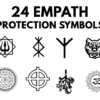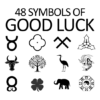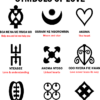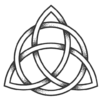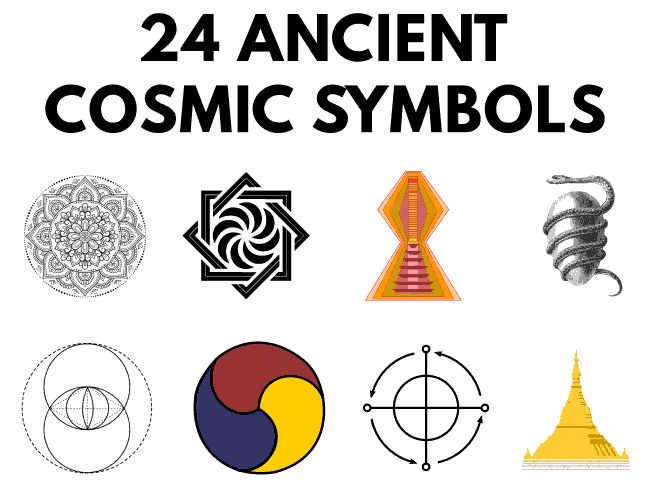
Cosmic symbols illustrate the universe. They remind us of our intrinsic connection to the cosmos, reflecting how wider universal processes mirror our own physical and spiritual cycles. Each culture has different ways to represent the cosmic connection. Here, we will look at 14 cosmic symbols to see what this concept looks like for different people around the world.
24 cosmic symbols from around the world
1. Tree of Life
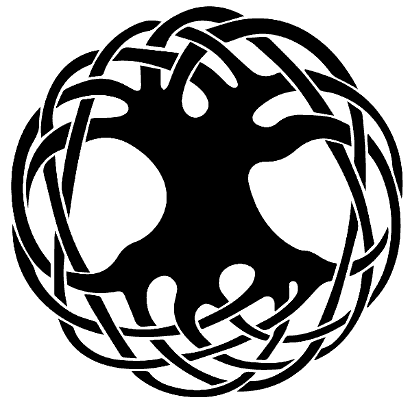
The tree of life is a ubiquitous representation of cosmic connectivity. Many cultures and religions incorporate it into their iconography, but the basal meaning remains the same. The tree represents our relationship with the physical and spiritual realms, placing us between them as a conduit for their dual energies.
The tree’s roots reach deep underground. They symbolize our connection with the earth, the power we gain from it, and our physical ability to grow and change. The branches of the tree stretch into the cosmos. They represent the inner power we glean from the spiritual realm to learn, grow, accept, and reach enlightenment.
2. Ouroboros

The Ouroboros is the classic symbol of the snake eating its tail. It represents cosmic harmony and can be interpreted to relate to the universe, our inner selves, or both at once. The Ouroboros reflects the cycle of birth, death, and reincarnation. It is creation, destruction, and void all at once.
All these states of being must exist for the universe to remain balanced. The cycle must continue for harmony to reign. The physical cosmos are much the same. The movement of faraway celestial bodies affects our planet’s ability to sustain life. All must function and flow correctly for us to live and thrive on earth.
3. Diya (Oil lamp)
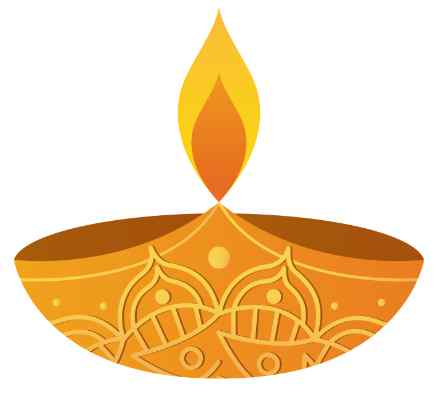
The Diya is a lamp found in India. It is used for religious ceremonies, rituals, and just for comfort in the home. The lighting of the Diya symbolizes cosmic light like that from the sun. It is a physical illumination that also represents a spiritual, mental, and emotional one.
The Diya sheds literal light on the darkness. It is a bringer of knowledge, a dispeller of ignorance, and an illuminator on the path of enlightenment. The oil in the Diya symbolizes the material world, and the light indicates the spiritual. It is only when we burn away the selfish desires of the physical that we may reach a connection with the cosmos and the spiritual enlightenment we seek.
4. Shankh (Conch shell)
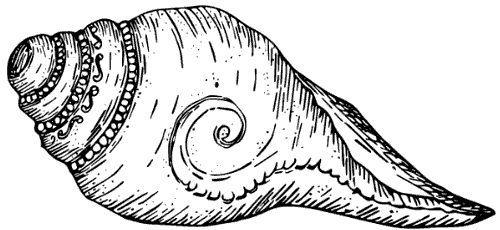
You may recognize the Shankh as a conch shell. The shell is an essential cosmic symbol in the Hindu religion, as it represents the spiritual space and the bridge between the physical and psychic realms. The Shankh is blown before rituals and ceremonies to connect with the spiritual world. It makes the sound of “OM”, the ultimate cosmic vibration.
“OM” is a tool that aids in entering the meditative state quickly and easily, opening psychic doors and helping us on the quest for transcendence. As a symbol of “OM”, the Shankh has many other uses as well — it acts as a vessel for holy water, it helps dispel negative energy, and its sound vibrations are even thought to cure certain diseases.
5. North Star
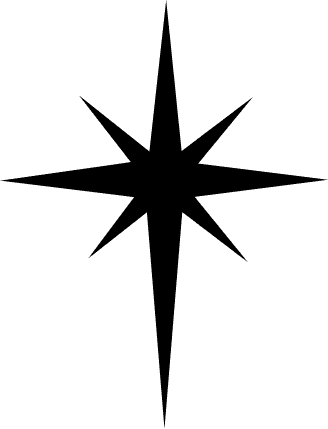
As a tangible celestial body, the north star (also known as the 8-pointed star) is the ultimate symbol of the cosmos. It lives in the heavens, shining down on earth and illuminating our path. Our connection to the north star allows us to discern direction. It lets us travel and discover, widening our knowledge of the world.
We use it as a guide to find our way forward, and it represents a beacon of hope when we are in a dark place. The north star reminds us to trust in something larger than ourselves: the universe. It allows us to wander, because we can always find our way back again. It is reliable and never-changing, a constant presence in our lives.
6. Buddhist Stupa

Also known as a Pagoda, the Stupa is an important cosmic symbol for Buddhists. Inside the Stupa are relics, or Buddhist religious objects. It is a place of prayer that practitioners use to gather, meditate, and connect with Shambhala. The act of meditation itself involves cosmic interaction, and the Stupa helps facilitate that divine connectivity.
Its shape is reminiscent of a three-dimensional mandala and symbolizes the teachings of Buddha. The four corners of the Stupa’s base are usually aligned with the four directions, symbolizing earthly grounding. The Stupa’s high pointed roof is representative of Buddha’s crown and is believed to be a cosmic conduit to divine power and spiritual connection.
7. Cross

Most believe the cross to be a purely Christian symbol, but that’s far from the truth. The cross is actually a much broader symbol, reminiscent of the tree of life in many respects. The vertical line of the cross is an active, masculine one. It represents power and celestial transcendence. The horizontal line is feminine and wise. It represents learning, wisdom, and earthly grounding.
The axis of the cross is where those two worlds meet. Its center is a place of cosmic enlightenment wherein the spiritual and physical are connected. The shape of the cross is reminiscent of a person’s body, and the center axis is right at the heart.
8. Borjgali

The Borjgali is a Georgian sun symbol which originated in ancient Mesopotamia and later migrated to eastern Europe. It symbolizes the sun, eternity, and the cosmic energy that allows life on earth to thrive. The Borjgali also characterizes the harvest season and the most fruitful times on earth.
Each of the seven arms represents a different cosmic figure. The moon, Mercury, Venus, Mars, Jupiter, Saturn, and the Sun appear on the Borjgali. This proves that even in ancient times, people recognized that cosmic processes affect us profoundly. The Borjgali’s arms symbolize the eternity of these cycles and the recognition of our diminished role in relation to the universe.
9. Cosmic Egg
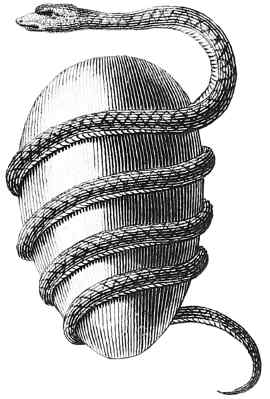
The cosmic egg is also known as the world egg or the mundane egg. It is a symbol found in many different cultures and represents a universal origin theory. The theory posits that the world began from an enclosure, or egg of sorts. This egg encapsulated all things. When it cracked open, the universe began.
The theory can be metaphorical or literal. In Greek mythology, the Orphic egg hatched open to give birth to Protogenos (meaning first born), who created all other gods and things. A similar concept is found in Vedic philosophy (Hinduism) wherein Lord Brahma (the creator of the universe) came out of a golden egg named Hiraṇyagarbha (which translates to ‘universal womb’). Therefore, Lord Brahma is also known as Swayambhu (the one who created himself). The golden egg is considered the source of all creation or manifested reality.
In Taoist mythology, the egg held a unified energy known as Chi. Either way, all cultures agree that the Cosmic egg represents the beginning. It is a primordial state of the unknown. Much like the universe itself, it was opened to become known and make way for life.
10. Horus
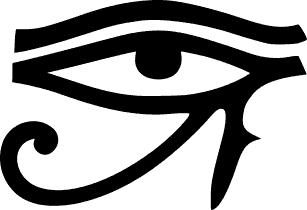
You probably know Horus as the Egyptian falcon god, with the body of a man and the head of a predator bird. Horus is an important Egyptian god, as it is he who watched over rulers and could help them pass between the world of living and dead. But Horus also ruled the skies.
He possessed powers like the falcon, the ability to soar towards the cosmos and gain infinite knowledge unlike any we mortals could ever have. Horus acts as a cosmic gateway, inviting us to connect energetically with the universe around us. He symbolizes the passage between life and death and the journey of reincarnation all souls must take.
11. Kalachakra
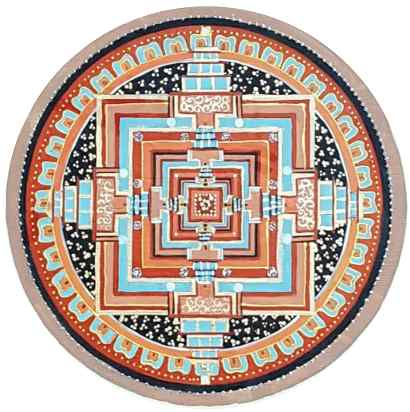
Kalachakra is a Sanskrit word literally translated as “wheel of time”. While it does represent the passage of years, it is a wider encapsulation of long cosmic processes. In the outer reaches of the universe, stars are born and burn and die over eons. And for us humans down on earth, the Kalachakra reflects similar processes happening inside us.
The birth and death of passion, ideas, and our physical bodies are all represented here. The Kalachakra is made up of many different shapes melded together as one. You’ll see circles, squares, and all sorts of sacred geometric forms encompassed within it. In this way, it symbolizes our interconnectedness with the cycles of time and the greater universe.
12. Solar Cross
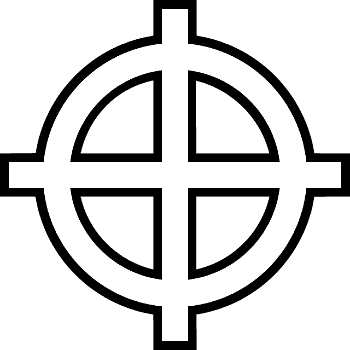
The solar cross is an equilateral cross inside of a circle. It represents the solar calendar and is thought to be one of the oldest cosmic symbols around. Each point within the solar cross represents a different solar position—rising, high, setting, and darkness.
The circle around the cross represents the universe which encompasses the sun and its movements. It also represents the human mind, within which can rest infinite knowledge. As a whole, the solar cross symbolizes our thirst for enlightenment and spiritual expansion.
13. Lunar Cross
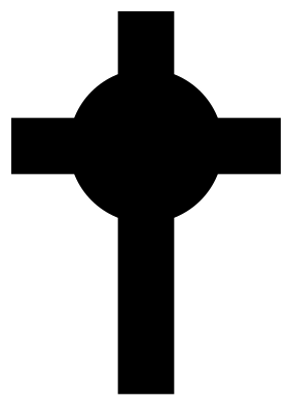
The lunar cross resembles a regular cross, but it has a moon resting atop it. It has been used for centuries by pagans for protection. Each corner symbolizes the four corners of the earth, with the moon rising above to characterize spiritual realms and the mysteries of the world.
This cross represents the importance of the moon cycles on our earthly ones—the ocean tides, the summer harvest, and even our innermost emotions are strongly related to this faraway celestial body. It also represents these processes inside us; the waxing and waning of the moon is a symbol for our own ever-shifting emotions.
14. Padmasana (Lotus pose)
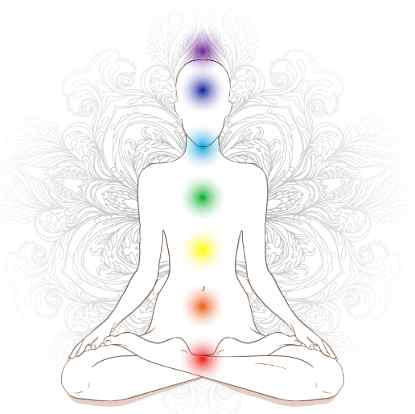
Translated as “lotus pose”, Padmasana is an integral yoga position reminiscent of the lotus flower. Metaphorically, we begin our cycle exactly as a lotus does—engulfed in the murk of materialism and desire. As we grow, we break the surface of enlightenment and bloom pure.
Padmasana is a passive position symbolizing rebirth and renewal through asana. It directs the flow of energy upward toward the cosmos. At its core, Padmasana represents both our surrender to the cycle of rebirth and reincarnation and our desire to leave it. By connecting to the outer cosmos, we help balance our inner turmoil, putting us one step closer to spiritual enlightenment.
15. Mandala
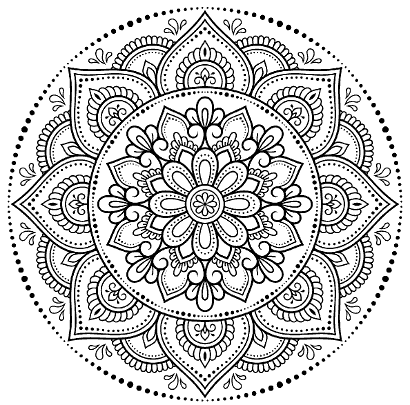
The mandala (meaning circle) is a cosmic symbol found across various cultures. It represents the universe, cosmic order, wholeness, eternity, interconnectedness, harmony and balance.
A mandala depicts intricate geometric patterns arising out of a single core or point. The patterns keep moving outward but they never end. The various forms and patterns emanating from a single point signifies oneness and that everything comes from a single source. It also signifies the eternal nature of the universe and the balance that exists between various elements.
16. Spiral
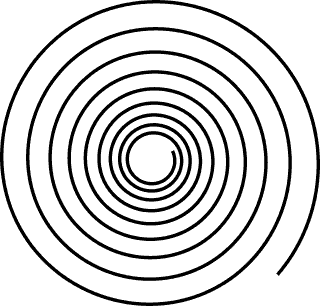
The center or starting point of a spiral, also known as the nucleus or ‘eye of the spiral‘ represents the cosmic source from which everything springs forth. It also represents one’s own center, inner power or divine source.
Also, depending on the direction of the spin, when the spiral is spinning outward from the center, it represents creation, or everything coming out of the one source and when it is spinning inward towards the center, it indicates destruction or everything returning back to the same source.
Thus a spiral represents oneness as well as duality or balance between opposing forces (good/bad, creation/destruction, positive/negative, waxing/waning, etc.) that is the basis of all existence.
17. Natraja
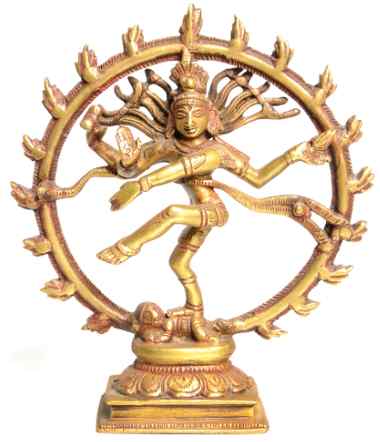
In Hinduism, ‘The Natraja’ is an avatar of Lord Shiva that depicts him engaged in the cosmic dance. As a cosmic dancer, Shiva destroys and recreates the universe with each step. This is because, the destruction of the old is required for the creation of the new. And this cycle of destruction and creation is cyclic and eternal.
Shiva is shown dancing within a flaming circle which represents the eternal nature of the universe. In his upper right hand, he holds a damru (small drum) which symbolizes the sound of creation. In his upper left hand, he holds agni (or fire) that symbolizes destruction of the universe. The snake coiled 3 times around his neck symbolizes cosmic energy and all of time – the past, present and future. The demon trampled under his right foot symbolizes human ego that one must bring under control to attain enlightenment.
18. Trilok
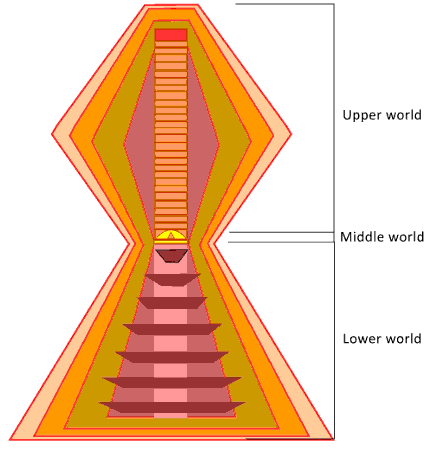
The Trilok is a cosmic symbol of the Jains. The word trilok translates to – ‘Three Worlds‘ or ‘Three Planes of Existence’. It represents the three parts the universe is divided into which include the Urdhav Loka (Top realm) where the Gods reside, the Madhya Loka (middle realm) where humans reside and the Adho Loka (lower realm) where demons and lower beings reside.
Each world is further divided into many smaller sections each representing a level of existence. At the very top is the realm of ‘moksh’ or a place of complete liberation of the soul. The triloka is located in a void also known as the unoccupied space.
19. Trimurti
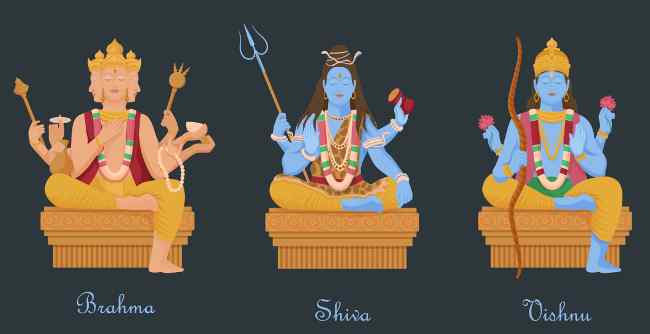
The Trimurti or Three Forms is a sacred symbol in Hinduism that represents the three cosmic functions that include creation, maintenance and destruction. These functions are represented by three deities (known as Trimurti). These deities include, Brahma the creator, Vishnu the preserver, and Shiva the destroyer.
There is also a feminine aspect of Trimurti called – TriDevi. The TriDevi represents the three female goddesses – Saraswati (Creation), Lakshmi (Preservation) and Parvati (Destruction).
20. Arevakhach
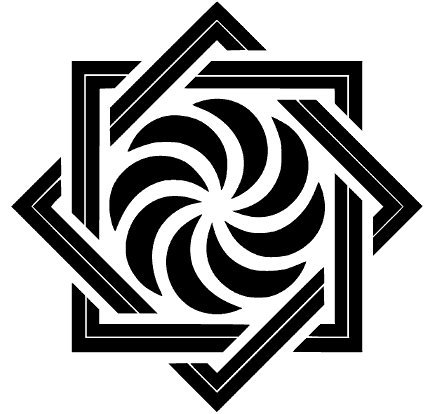
The Arevakhach is an Armenian symbol that represents eternity, cycle of life, cosmic energy and the materialization of spirit energy in the physical world. The symbol carries 12 branches that symbolize the 12 zodiac signs that regulate changes on earth and in the universe. Similar to the Borjgali (discussed earlier), this symbol looks like it is in constant movement which represents the eternal cycle of life.
21. Vesica Piscis
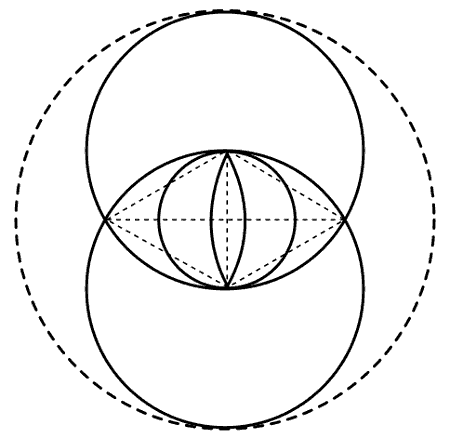
The vesica piscis is a sacred symbol that depicts two circles that intersect in a way that the center of each circle lies on the perimeter of the other. The circles represent the spiritual and material realms and the marquise or lens (pointed oval shape) formed by the intersection of these two realms represents the materialization of spirit.
When viewed vertically (with the two circles lying side by side to each other), the vertical lens shape is said to represent the cosmic womb – that leads to the manifestation of things into the physical world. And when viewed horizontally (with the circles placed one above the other) the horizontal lens represents the cosmic eye.
The Vesica Piscis also represents union of opposites like male/female, spirit/matter, heaven/earth, night/day, positive/negative, etc. that is the basis of this universe. The Vesica Piscis also appears in many other sacred symbols like the flower of life and David’s Star.
22. Kongo cosmogram (Dikenga)
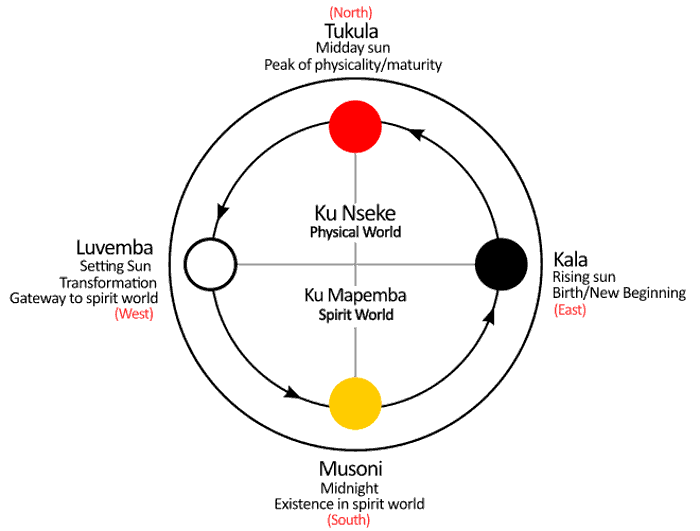
The Kongo cosmogram is an important cosmic symbol of the Kongo people. It is a quartered circle that depicts the cycle of life, existence, death and rebirth based on the movements of the sun. The symbol represents the intricate connection that exists between the material realm and the spirit realm and how one has the powers to access the sprit realm and ancestral wisdom.
23. Native American Medicine Wheel
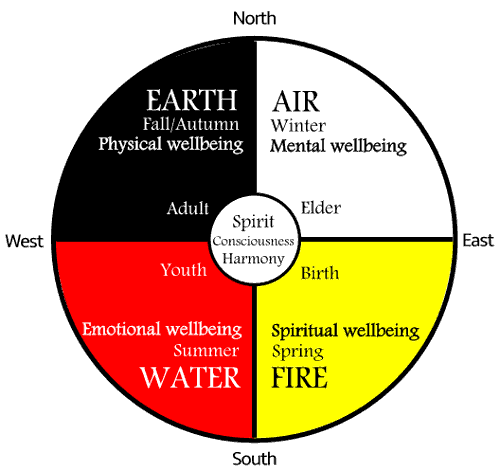
The medicine wheel (also known as the Sacred Hoop) is an ancient symbol used by Native American tribes for healing, wisdom and guidance. Similar to the Kongo cosmogram, the medicine wheel is a circle with four quadrants each representing a specific aspect of the universe and existence. The four quadrants can represent the four directions (East, West, North, South), the four elements (Fire, Earth, Air, Water), the four seasons (Spring, Summer, Fall, Winter), the four elements of wellbeing (physical, mental, spiritual, emotional), the four stages of life (birth, youth, adult, death) and the four times of the day (Morning, Noon, Evening, Night).
In addition, the circular shape of the Sacred Hoop represents the cyclic nature of life, the path of the sun and moon and the interconnectivity of all beings with each other and with the universe.
24. Trikaya

The Trikaya is a symbol of Mahayana Buddhism that talks about the nature of reality via the depiction of three Kayas or forms of Buddha. The three forms include, the Dharmakāya (ultimate/absolute reality), the Saṃbhogakāya (Spiritual incarnation of Buddha), and the Nirmāṇakāya (physical incarnation of Buddha).
Conclusion
Cosmic symbols characterize vital processes like the birth and death of stars, the orbit of the planets, and the gravitational pull of celestial bodies. They have a large impact on us, both physically and spiritually. Next time you need a little bit of extra cosmic power, incorporate some of these symbols into your life and watch the magic happen.


